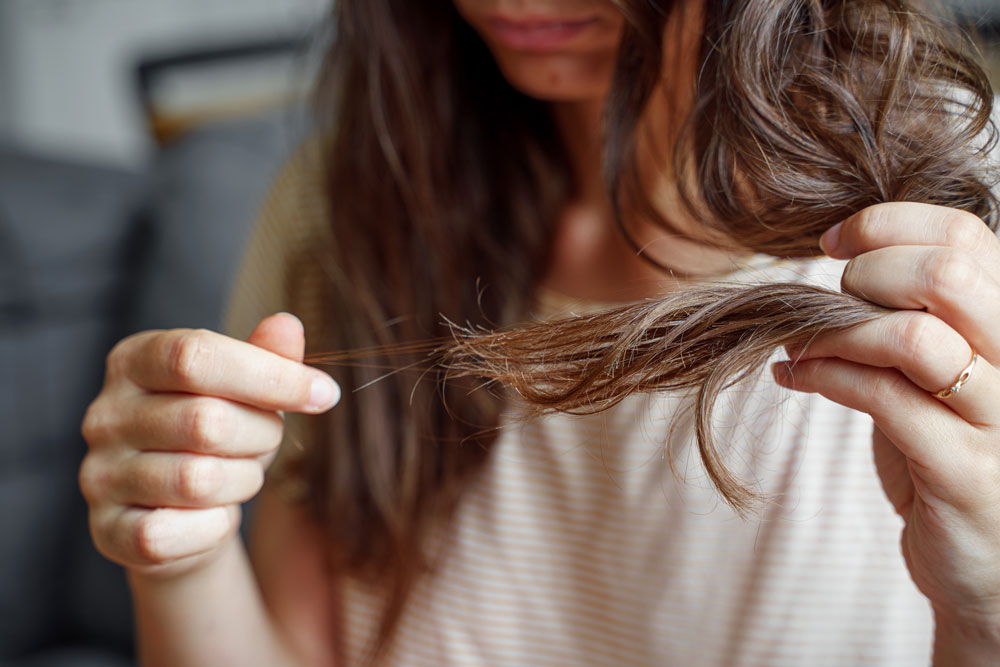So you had COVID-19. You got better. But now you’re losing more hair than normal… You might be experiencing hair loss with Long COVID. Loads of people have developed noticeable hair loss after recovering from this virus, even months later. Is your hair falling out in large clumps after being ill? If this is you, keep reading.
What is Long COVID?
Most people with coronavirus (COVID-19) feel better within a few days or weeks of their first symptoms and make a full recovery within 12 weeks. But, for some people, symptoms can last longer. This is called long COVID or post COVID-19 syndrome.
“People experiencing long covid have reported a wider set of symptoms than previously thought, including hair loss and sexual dysfunction.” – The British Medical Journal, 2022.
The symptoms with the largest reporting were anosmia, hair loss, sneezing, reduced libido and shortness of breath.

Who can get Long COVID symptoms?
A study published in Nature Medicine suggested that women, young people, and people from a black, mixed, or other minority ethnic group had an increased risk of long covid. Smoking and being overweight were also linked with reporting of persistent symptoms.
However, a big number of middle-aged healthy men and women have also reported hair loss as one of the main post-COVID symptoms.
Temporary hair loss is common after a fever or illness
This is actually called hair shedding. It happens when more hairs than normal enter the shedding (telogen) phase of the hair growth life cycle at the same time. Why does it happen? Because high body temperatures (fevers) tend to force more hairs into the shedding phase.
While ill, we can easily go from shedding 100 hairs a day, to several hundreds of hairs in just one day! Many people can spot noticeable hair loss 2-3 months after having a fever or illness. But this hair shedding usually lasts for no more than six months.
Other detonators
Hair loss with Long COVID is a reality faced by many who have undergone the illness. But coronavirus or not, hair loss has become one of the most uncomfortable side effects of this pandemic.
Many of us have become more vulnerable to mental stress. We were all forced to deal with a lot, real soon. Here’s some other factors to it:
1- Hair Loss due to Stress.
The biggest trigger is the stress created from noticing the shedding itself. When we notice we are losing hair, our stress levels go up, which causes even more hair to fall out.
This vicious cycle is where most people get stuck when they first notice any hair loss signs. A way to break it is to consider products that instantly reduce the visibility of bald spots or thinning hair. This way, you help your hair return to its natural growth phase –avoiding any added stress.
You may also like: How to deal with stress and prevent hair loss.
2- Hair loss due to nutrition.
Our bodies expend a big deal of energy producing hair. Therefore, any disruptions in the amount of nutrients we give it can affect the amount and quality of hair follicles present in our scalp. It’s important to keep a well-balanced diet rich in vitamins and minerals that encourage healthy growing hair. Here’s how.
3- Hair loss due to the lockdown. Literally.
For people who used to be outdoors on a daily basis, the reduction of vitamin D had a significant impact on their overall physique and mental state of mind. Drastic changes to our routine can trigger detrimental effects in our entire organ systems as well. And this can take a long time to go back to normal.
Will it stop falling out?
The good news about hair loss with long covid is that they should resolve on their own as the normal hair cycle returns. But it may take up to six months. For men, this might not be a long time to wait. As the vast majority of men style their hair shorter than women. But for women who style long locks, it can actually take up to 3 years!
If hair loss due persists, it’s important that you speak with your hair physician to rule out iron deficiency or thyroid disease.
In the meantime, you can always try non-invasive, topical solutions like hair fibers to make your existing hair look fuller and thicker. Remember, making a small change on your self-image can cause a big change on your quality of life. So why not fall back in love with your hair today?





